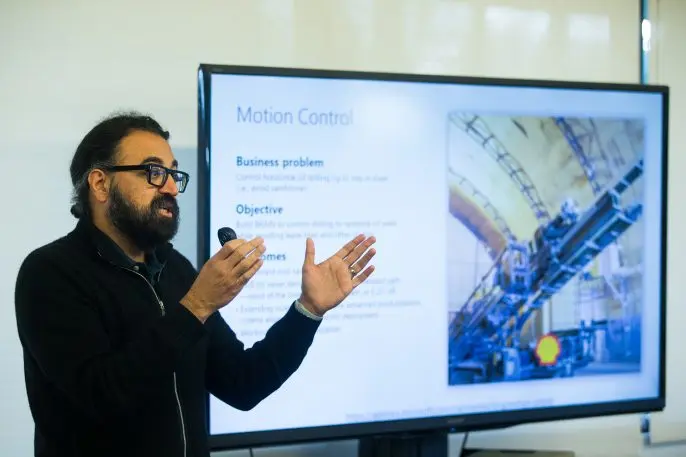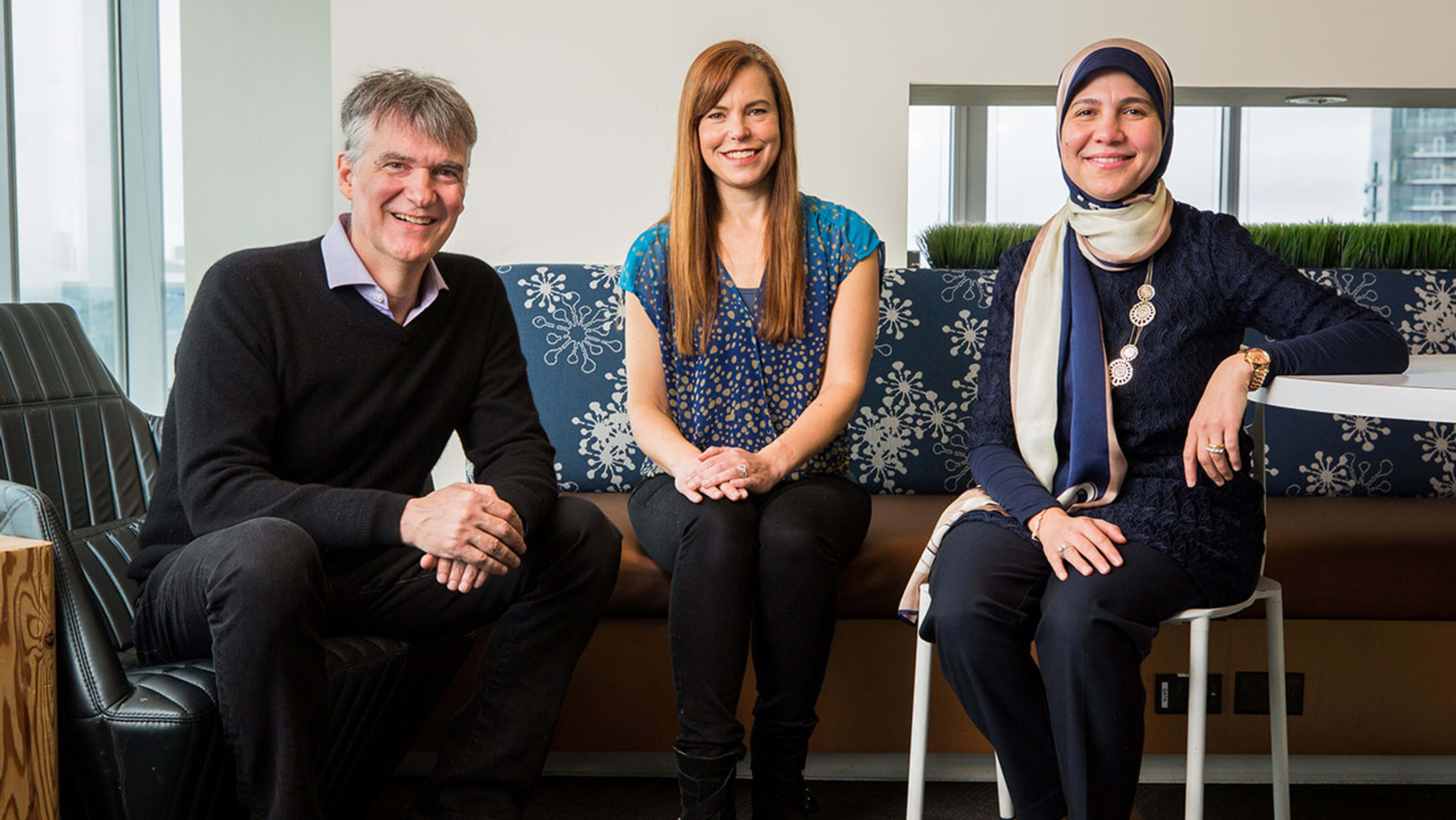Microsoft is rallying behind a new buzzword as it tries to sell businesses on artificial intelligence.
It’s called “machine teaching,” and it’s loosely defined by Microsoft as a set of tools that human experts in any field can use to train AI on their own. After steadily developing and acquiring some of these tools, Microsoft is hoping to popularize the concept of machine teaching with a big public push. The hope is that more companies will build their own AI software—running on Microsoft’s cloud computing platform, of course—even if they haven’t hired their own AI experts.
“We believe that this is going to be one of the big transformative forces of how AI can be applied to a lot more scenarios and be available to a lot more people in the world,” says Gurdeep Pall, Microsoft’s corporate vice president of business AI.
Closing the chasm
Microsoft pitches machine teaching as a complement to machine learning, which refers to the way that AI systems analyze data and learn to predict things, like whether a photo contains a human face. With machine teaching, humans guide the system along by breaking a task into individual lessons, akin to how someone learning to play baseball might get coached on tee-ball before graduating to underhand pitches and full-blown fastballs.
“Machine learning is all about algorithmically finding patterns in data,” Pall says. “Machine teaching is about the transfer of knowledge from the human expert to the machine learning system.”
Microsoft can’t claim sole ownership of the term. Xiaojin (Jerry) Zhu, a professor at University of Wisconsin-Madison, has used “machine teaching” to describe a set of approaches to training machine learning algorithms since 2013, though he and Microsoft both agree there’s some overlap in their definitions.
While Microsoft says machine teaching is most conducive to fields like autonomous systems, where the AI has to decide between lots of potential real-world actions, it’s also just a way to make AI more accessible. With the right tools, a subject matter expert should be able to train an AI system without having to understand machine learning, in the same way that a baseball coach doesn’t have to learn brain chemistry.
“[Subject matter experts] can basically start using AI largely without understanding a lot about how machine learning itself is working,” Pall says. “And they’re able to basically transfer the knowledge that they have as human experts in a particular area to the AI that needs to run it.”
Last year, Microsoft acquired a startup called Bonsai to help abstract away the complexities of AI development. Similar to how Visual Basic is a simpler programming language than C, Bonsai has its own language, called Inkling, which is supposed to be simpler than than low-level AI development. Pall says that with these kinds of tools, industries such as energy, finance, and healthcare can build AI applications without having to hire their own AI experts, who are in high demand and short supply.

“The problem now isn’t, Is my algorithm getting better at finding that one extra percent performance?” Pall says. “It’s, Is the human expert now able to control the system to learn to be a better machine than it is?”
Experts still needed
Despite those grand proclamations, Gartner analyst Erick Brethenoux says companies are still going to need AI experts.
For one thing, machine teaching depends on a specific trial-and-error-style approach to AI called deep reinforcement learning. If the goal is to move an object to a particular destination, for instance, the system is rewarded whenever it points the object in the right direction. Brethenoux says the applications for this method are still pretty narrow, and are seldom used at scale.
But even if Microsoft is right that it’ll become more widely applicable in the future, he still suggests having an AI expert around to monitor the system in the background and explain what happened if something goes wrong.
“You need some transparency into the box, and sometimes domain experts are not always technical experts,” Brethenoux says. “Sometimes they have do not have the knowledge to open the box.”
Stake in the ground
Brethenoux also notes that Microsoft isn’t alone in trying to simplify AI development. He points to other companies like Cogitai, which offers its own platform for deep reinforcement learning, and to Google’s Cloud AutoML, which promises the ability to train custom AI models with minimal machine learning knowledge.
Still, Brethenoux says Microsoft has done well to solidify its AI tools in recent years, and that it understands the needs of companies. “They’ve done a great job in the last few years,” he says. “They’ve advanced the field a lot.”
Machine teaching, then, isn’t so much about some big new advancement in AI, but about marketing a series of smaller improvements that could add up over time. As with other tech buzzwords, like Internet of Things, 5G wireless, and even AI itself, machine teaching might be more premise than product.

“Rather than some abstract idea, we can show that this is how it can actually be applied, and this is why when you apply it this way, you can see the benefits for yourself,” he says.
Recognize your brand’s excellence by applying to this year’s Brands That Matter Awards before the final deadline, June 7.
Sign up for Brands That Matter notifications here.
